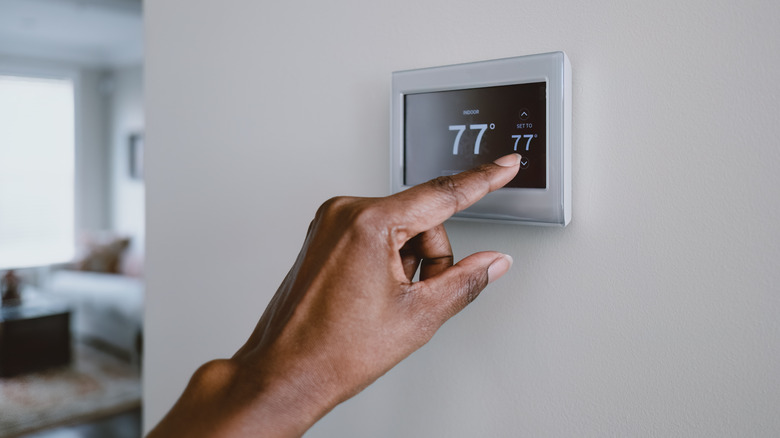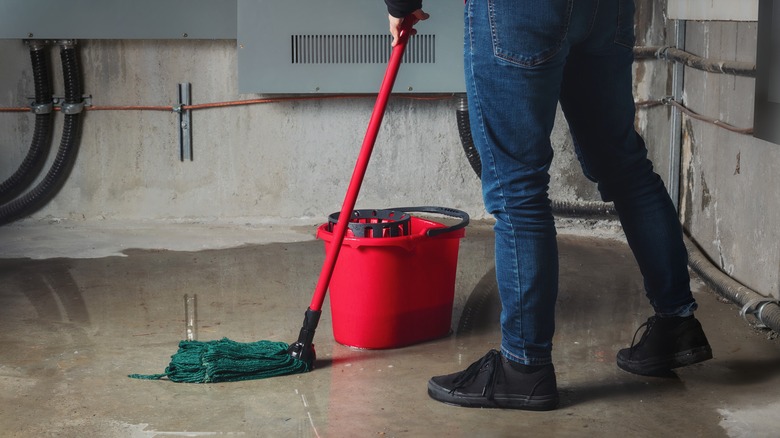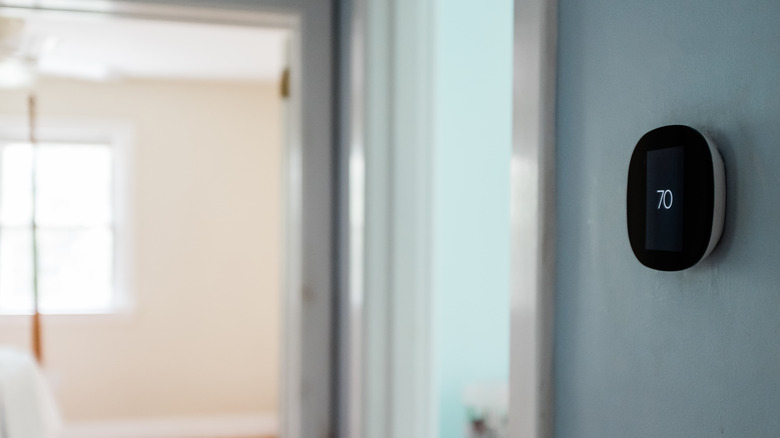Does Turning The Heat On And Off In The Winter Save You Money?
For many, the days are getting shorter, and nights are getting colder, which means furnaces around the globe are kicking on more often. With the change in weather, you might be thinking about ways to save money when heating your house. The obvious choice may be to turn the heat off, but for some, that can cause more issues — and cost more money — in the long run.
The exception is if you are lucky enough to live in a sunny location where temperatures rarely, if ever, sink below freezing. Then, you may be able to get away with turning your heat off and throwing on more layers this winter. Ensure you keep your eye on the weather, though, in case a cold snap is coming. No one wants to deal with frozen pipes! However, for those of us living in places where winter means frigid temperatures and blizzards, we have to think about ways to heat our homes while also saving money. The good news is there is plenty of solid advice about ways to save money and energy during the winter months.
Why you cannot turn the heat off
Warming your home is about more than just being comfortable, so even if you think you can tough it out with winter clothing, turning the heat off is not likely an option. Keeping the house warm—or at least above freezing—also helps ensure you avoid frozen and burst pipes, which can be a potentially expensive problem. Keeping your thermostat set above 55 degrees Fahrenheit should keep your pipes warm enough to withstand freezing temperatures. So, even if you live in a warmer climate, setting your thermostat to this temperature will help ensure you aren't caught by surprise.
It's also worth noting that depending on your heat source, turning it completely off may not be an option. For instance, people with a boiler may use it for more than heat — it can also provide hot water — making it impossible to turn the system off fully. (If this is you, and your heating bills are increasing more than normal, check out these signs that you may need a new boiler.)
The best temperature for your thermostat
Most experts agree that if you want to save money on your heating bill, the best way is to simply turn it down. Turning your heat down 7 to 10 degrees Fahrenheit while you are out of the house during the day — or while everyone is sleeping, tucked under their duvets or comforters — can save you about 10% on your bill over the course of a year, according to the U.S. Department of Energy. It also recommends keeping the temperature set to around 68 to 70 degrees Fahrenheit while you are home and awake.
A programmable thermostat automatically adjusts your home's temperature based on the time of day, allowing you to save money and stay comfortable. These also have the added advantage of letting you set the schedule so that the temperature increases before you wake up — ensuring you never wake up to a frigid house — or come home from work.
These thermostats are not for everyone. For instance, they do not work well with heat pump systems that are also used for cooling — so be sure to do your homework before purchasing. If installing a smart thermostat is not your future, or you are simply inspired to find new ways to save money, consider these other tips for saving on energy costs at home.


